
As great as the Street Fighter series is, pugilism fans with longer memories will tell you that it’s about ruddy time some of Capcom’s somewhat lesser-known games are getting their time in the spotlight. Arriving on Switch on 24th June, Capcom Fighting Collection showcases not just the entire Darkstalkers series, but also a succession of obscurities, including one game that’s getting its first home release ever — the spectacular Red Earth.
Given the vintage of these punch-’em-ups, we thought it prudent to offer something of a cheat sheet on the included titles, so that when you get cornered by a fan of the genre at the pub or something, you can hold your own in conversation without fear of ridicule or reprimand.
Anyway, let’s get on with it. Round 1… FIGHT!
The Darkstalkers Series
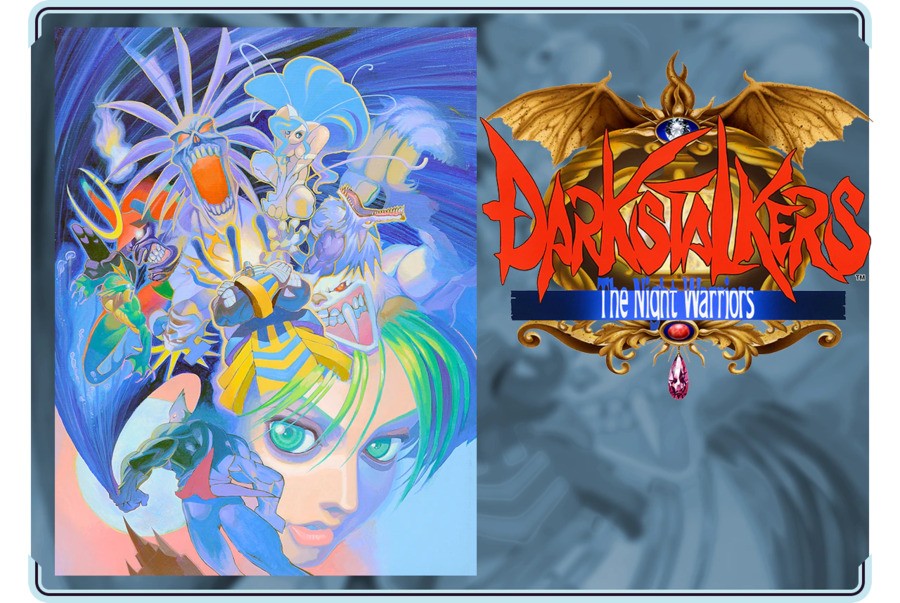
If there’s one Capcom franchise that the gaming giant is constantly being begged to revive, it’s… well, it’s Dino Crisis. But hey, Darkstalkers is pretty often requested, too, and series fans have had their hopes raised and dashed quite expertly over the years.
While this isn’t a new game, it’s still a nice compilation of every title in the series, beginning with Darkstalkers: The Night Warriors, released in 1994 and impressing from the get-go with colourful, expressive, manga-esque visuals quite some distance above those of the perhaps-ageing Super Street Fighter II’ Turbo. The cast consists of yokai, Japanese monsters such as Bishamon (a ghostly samurai possessing his armour) and Felicia (a cheerfully nude cat-woman), alongside takes on Western monsters such as Victor (a lightning-powered take on Frankenstein’s Monster) and Lord Raptor (a rock star zombie, and yes, he’s as cool as that sounds). On top of its fast-paced action, the original Darkstalkers made several innovations to the one-on-one fighting genre, such as the ability to block attacks while airborne, as well as moving while crouching, adding new tactical depth to the proceedings.
The next year, the sequel Night Warriors: Darkstalkers’ Revenge hit arcades with a mighty thwack, adding the ability to stock up special moves and the option of automatic blocking. Two new characters were added in Darkstalker hunter Donovan and fan-favourite Hsien-Ko, a Chinese hopping vampire (Jiang-Shi).
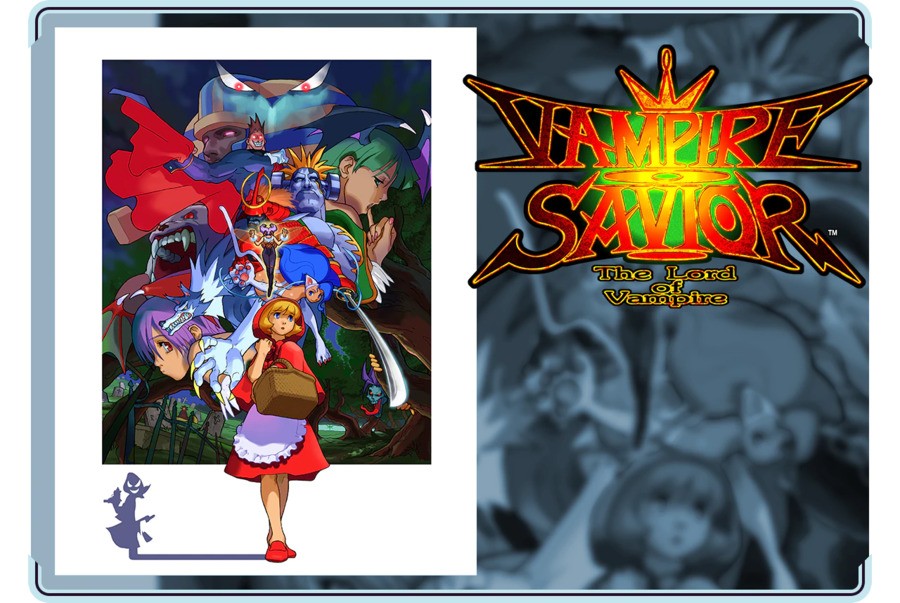
Rarely ones to let a game go un-sequeled, Capcom released Vampire Savior: The Lord of Vampire in 1997, adding four more new characters to replace the departing Donovan, Huitzil and Pyron. The newcomers here were B.B Hood (Little Red Riding Hood with an Uzi), Jedah (a powerful demon and the game’s final boss), Lilith (a succubus with a close relation to veteran Darkstalker and series cover girl Morrigan) and finally Q-Bee (a, erm, bee-person who devours souls).
As well as these fresh faces, the game also introduced the ability to partially recover health if you avoid taking damage. However, as a countermeasure to this, a new “Dark Force” system lets you utilise unique special abilities for each character that are able to inflict damage that cannot be healed.
Revisions Vampire Hunter 2 and Vampire Savior 2 restored the removed Donovan, Pyron and Huitzil, though both games removed other characters in order to do so. Along with various gameplay and visual changes, Savior 2 saw the addition of two new secret characters; Shadow and Marionette, both of which require codes to be entered and merely take on the form of other characters throughout the game.
Red Earth
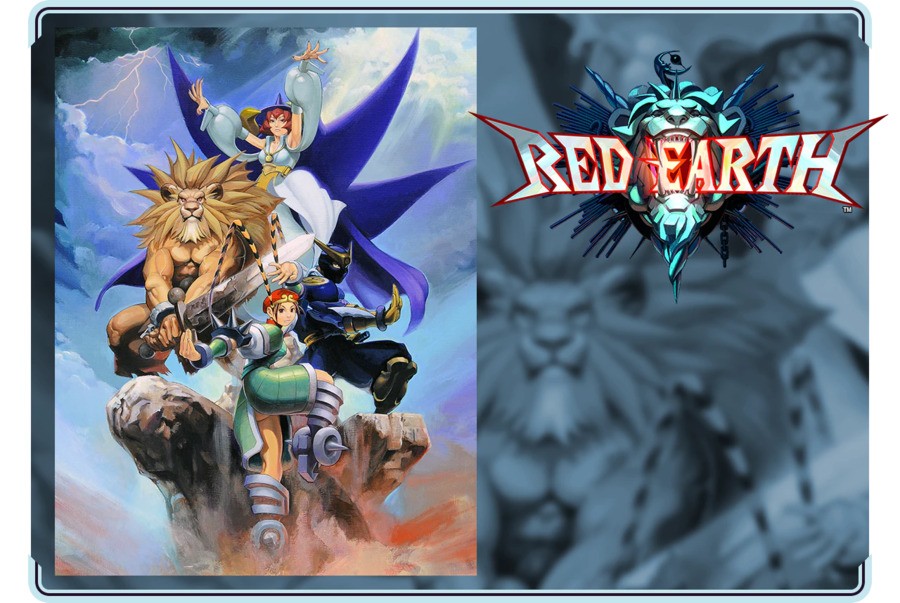
Known in Japan as War-Zard (a much cooler name, frankly), Red Earth is a bit of an oddity. Unusually for a fighting game, it only has four playable characters, who do battle against eight “boss” monsters in a single-player Quest Mode that sees you levelling up your chosen character as you play, a password system allowing you to retain your progress between game sessions.
Also setting the game apart from its contemporaries is the ability to batter coins and treasure chests out of your opponent, collecting items in order to gain experience, increase your health and gain super attacks. This gives the game a feeling closer to a belt-scroller such as Final Fight than a one-on-one combat title, though it is resolutely that. Indeed, a traditional Versus Mode is also included, though with only four characters it’s a little more limited than most. As a consolation of sorts, you’re able to perform fatalities on your defeated opponents, akin to Mortal Kombat.
Cyberbots: Full Metal Madness
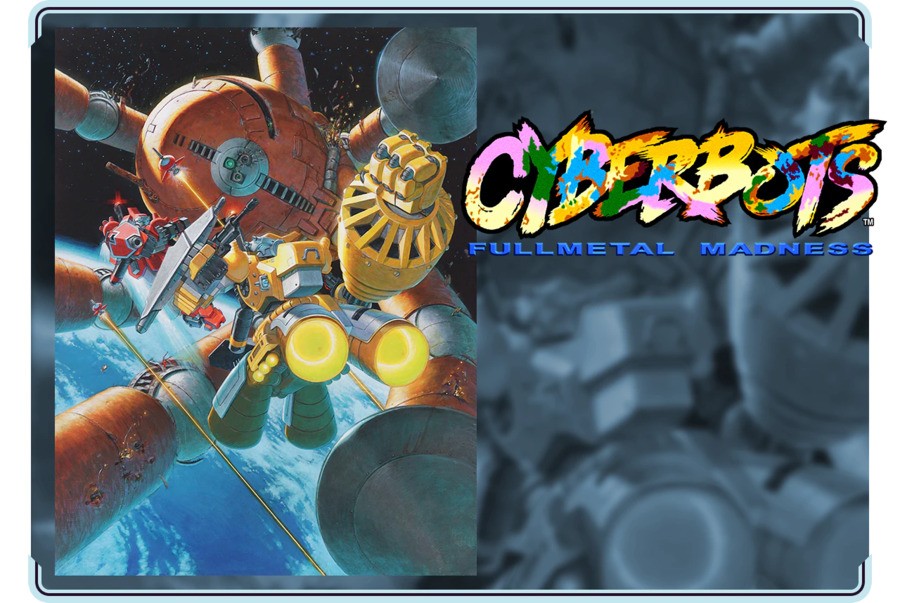
Spun off from the Capcom Beat 'Em Up Bundle’s brilliant Armored Warriors, Cyberbots sees a bunch of giant mecha absolute leathering seven shades of sh- er, scrap out of one another; interestingly, players choose from one of six pilots first, with Marvel vs. Capcom’s Jin Saotome being the most recognisable of the lot.
There’s a degree of customisation involved in your choice of robot, as each of the four main types can have its arms, legs, and weaponry formatted in one of three arrangements, each allowing for a differing approach to combat. While it’s far from Capcom’s best game, it’s still a thoroughly welcome addition considering that it hasn’t been seen on a home system since the original PlayStation – that is, if you don’t count the absurd, expensive (but gorgeous) Capcom Home Arcade. Which we don’t.
Super Gem Fighter Mini Mix
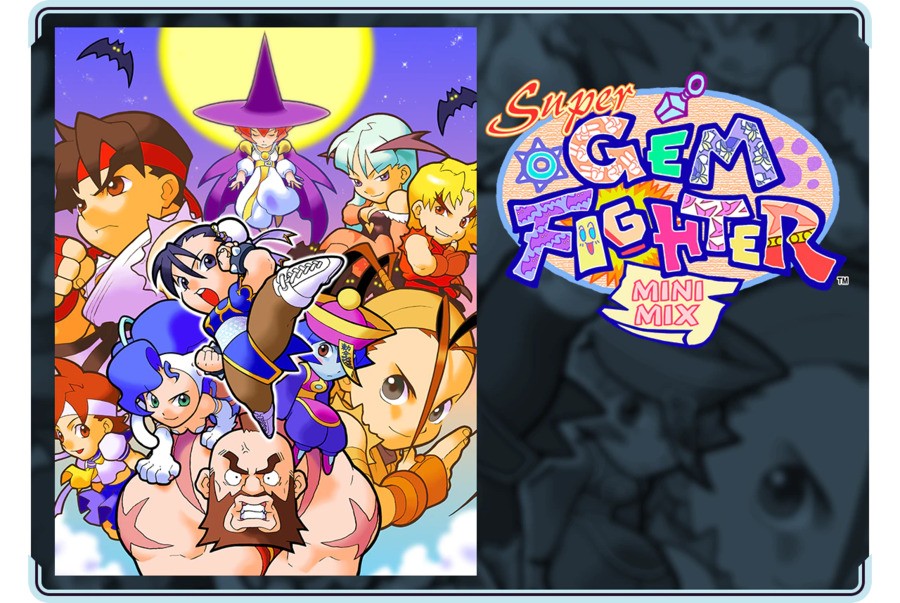
This totes adorbs super-deformed mash-up fighter brings in characters from Street Fighter II and III, as well as Darkstalkers and Red Earth. It’s absolutely packed to the gills with Capcom fan service, so dense visually that characters can and will change costume between each hit in a combo.
The big gimmick here, outside of the outlandish visuals, is the titular gems; beat these out of your opponents to level up your special moves and seize victory. Don’t forget about the two easy-to-find secret characters, Akuma and Dan.
Super Puzzle Fighter II Turbo
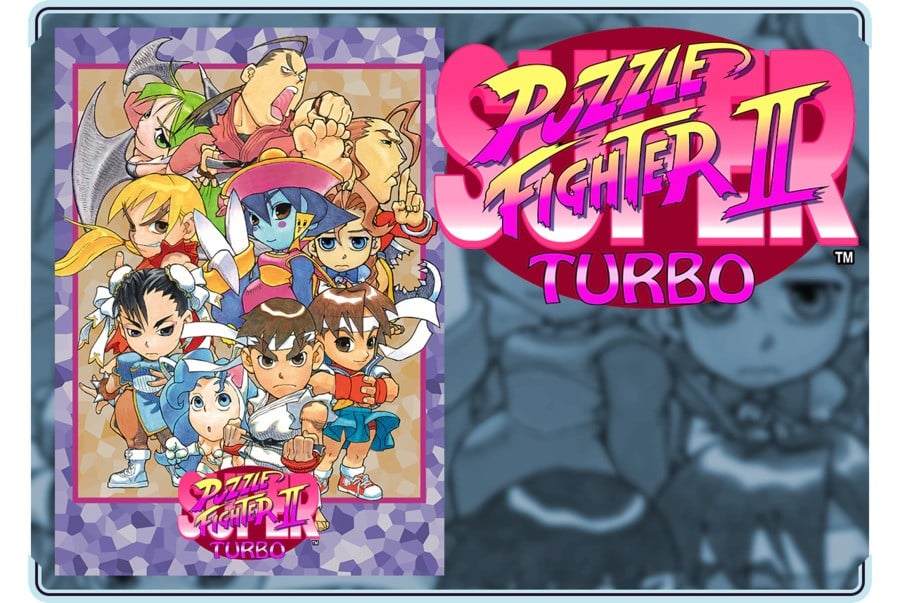
An enjoyable tile-matching game not entirely unlike Sega’s Baku Baku Animal, Super Puzzle Fighter II Turbo lets you drop blocks all over your friends’ faces with the same cute-as-a-button art seen in the preceding game, Gem Fighter. The more gems you destroy, the more your little fighter will beat your opponent's ass. It’s arbitrary, basically, and we mean that in a totally non-critical way.
Of course, this isn’t a fighting game at all, really, but it’s a welcome inclusion in the package and a good video game.
Hyper Street Fighter II: The Anniversary Edition
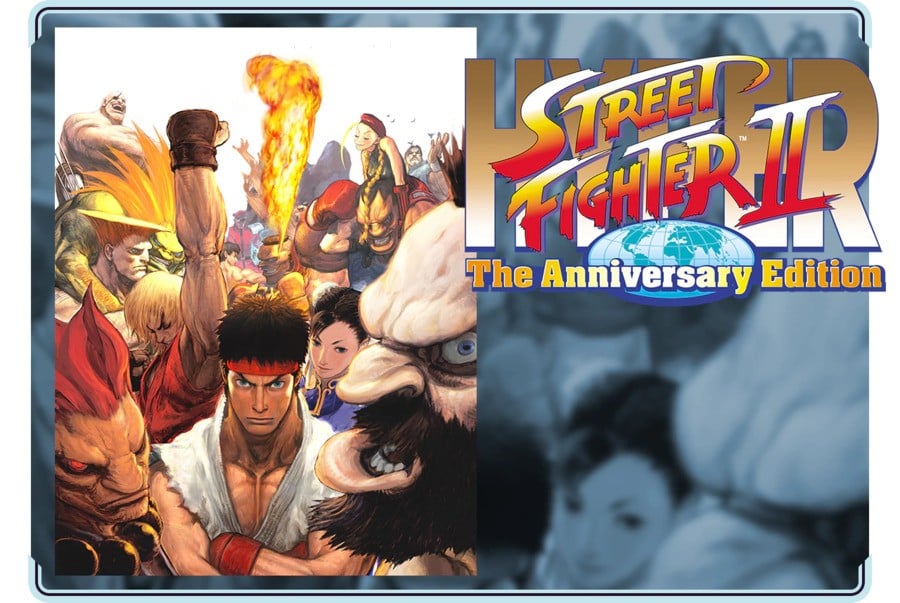
Last seen on PlayStation 2, this game crams in every iteration of every character from every version of Street Fighter II – that’s the original, Champion Edition, Turbo, Super, and Super Turbo. That’s an astonishing 65 variations of fighters to choose from and essentially the “ultimate” version of the game – much more fully-featured than the misnamed Ultra Street Fighter II, for example.
It’s one for the fans; much like this whole package, which Hyper Street Fighter II rounds off beautifully. As good as it is though, maybe we can get Hyper Street Fighter Alpha sometime?
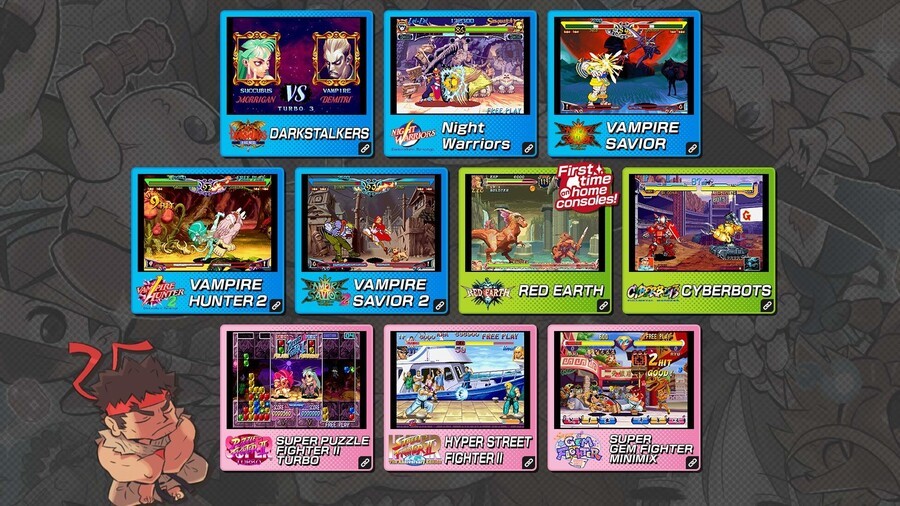
So that's the roster. Which ones are you excited to see on Switch? Let us know below which of these fighters you're looking forward to putting through its paces.





Comments 55
Preordered that weeks ago! Super excited!!!
@SlimFreakinFast Holy crap you have the best avatar!!
EDIT BECAUSE TIRED: NINJA APPROVED
Special thanks to @SteamEngenius <3
Super excited to play these games! I’m a big fan of the Darkstalkers series and Gem Fighters is so much fun to play. The only thing that could top this collection would be a Marvel/Capcom collection, but that one is a very long shot.
I am so excited to get lost in these games! The Darkstalkers games hold a special place in my heart as my local arcade always had them.
Are they all based on the arcade versions and no console versions?
This is cool for all the people who like 'em 'n' stuff.
I'm more of a Street Fighter, King of Fighters, Samurai Shodown kinda guy. And obviously you get much more Street Fighter elsewhere.
For any Darkstalkers fans, I'd recommend to looks for the Night Warriors: Darkstalkers' Revenge which is a four-episode OVA anime series.
It's nicely animated.
Such a sweet collection. Super Puzzle Fighter II Turbo is one of the best tile matching games ever. And Darkstalkers are Capcoms best art dirction along with 3rd Strike. Day One for sure.
Oh I'm excited. I do hope Rival Schools makes its way to Switch in some form eventually. That's a series I never really had a chance to dip my toe in.
I think you mean 'prudent' rather than 'prurient' at the beginning.
Cyberbots is playable on the first Capcom Arcade Stadium.
@BloodNinja Of all the comments you make, the ONE that would make sense to add NINJA APPROVED to it...you don't? The internet is a weird place.
@OldManHermit My hope is that if I keep buying all these Capcom collections we’ll eventually get Rival Schools and Power Stone in some form or another.
I pre-ordered this the day it was announced.
All the Darkstalkers games available on one piece of physical media is worth the asking price, by itself!
The rest of the games are some marvelous additions, too.
@Thomystic You're right, of course. Thanks for the spot.
@Clyde_Radcliffe Original arcade versions. That sucks. Almost every game in this bundle have console ports, that are a lot superior to the arcade originals. Console ports better than the arcade originals. Cyberbots on Sega Saturn have Chiyomaru Kagura and Tessan Hagure, Princess Devilotte de Deathsatan IX, SHADE, and Z-GŌKI(Japanese version only?) as playable characters. Console versions of Super Puzzle Fighter II X have Devilotte, Lin Lin, and Anita. But Vampire's(Darkstalkers) case is the worst one, imo - there is no Dee in the games. Dee - is Donovan, who corrupted to the dark side. Disappointingly, Dee as playable character available only in Japan-only Vampire compilations on PS2 and PSP, if I don't confuse. Yeah, that's really bad.
So excited! Darkstalkers is amazing!!
Worth whatever they ask just for darkstalkers alone.
@LittleGhost There is only arcade original versions... So, that's why that's not worth whatever they ask, imo. I want to be able to play as Dee. But he's playable only in Japan-only Vampire compilations on PS2 and PSP. That sucks.
I'm not excited by this bundle. I'm disappointed by that. There is only arcade original versions in. And there is no way to play as console exclusive characters. Especially Dee in Vampire(Darkstalkers) games. And that sucks. I will give this bundle a 5 out of 10 or 6 out of 10. When we will get superior console ports with exclusive playable characters, huh!? Oh, yeah - probably never, because developers are lazy. And, they probably lost codes of the console versions of the games. Like Team Ninja did with Ninja Ryūkenden(Gaiden) Xbox Original versions. Ninja Ryūkenden Black, if I don't confuse.
Cyberbots is on Arcade Stadium.Great game.
@CharlieGirl That's not worth the cost, imo. There is inferior arcade original versions. Vampire: Darkstalkers Collection(PS2) and Vampire Chronicle: The Chaos Tower(Dreamcast, PSP) are a lot better and superior than the arcade original versions.
Getting this next week alongside Three Hopes. Despite being a Street Fighter and Marvel vs. fan, I never played Darkstalkers, so it'll be nice to have all those games in one comp. The SF puzzle games, Cyberbots and Red earth are really nice bonuses.
@Vyacheslav333 So it's not worth the price tag and everything takes a total 50% hit because of one character you like being absent? That's an interesting opinion. At least you're not petulant.
@LittleGhost I said "Especially Dee". There is other console exclusive playable characters in other games in the bundle.
@Vyacheslav333 Yes, but this isn’t a console collection. Would you also expect SNES ports on a collection of Genesis games?
@Bass_X0 If we was talking about SNK Fighting Collection, I would think about it. But that's not the case.
@Vyacheslav333 I'm happy with the collection, and I'm getting a good value for the price I paid.
It was a surprise to see Hyper Street Fighter 2........I half expected to see collection containing
-Super Street Figher 2 Turbo/Hyper Street Fighter 2
-Street Fighter Alpha 3 Upper/Hyper Street Fighter Alpha
-SFIV Arcade Edition/Omega SFIV
But at this rate it looks like Street Fighter Alpha 3 Upper/Hyper Street Fighter Alpha/Omega SFIV will be lost in the future l. I half expected Hyper SF2 to be lost and never ported.
(SFIV QEwill eventually get a port on gererations down the line........)
@CharlieGirl Well, okay.
I think this and monster hunter will be my splurges this month. Being broke sucks. Gotta have them quarter eater originals!
@Vyacheslav333 So the issue is that you don't understand what a console exclusive is?
@SteamEngenius I'm tired LOL. I'll fix it.
NINJA APPROVED.
❗️I only care for 'Hyper SF' but I had it on PS2 and it was 2Hard4Me 😭
@Clyde_Radcliffe all arcade, not sure why you’d want the console versions? The PS1 versions of the Darkstalkers games were terrible with more frames of animation missing than there was present. Saturn versions were ok but again had lots of missing frames, and the character sprites were significantly smaller although Saturn Pocket Fighter is pretty close to the arcade version.
@Vyacheslav333 the PlayStation versions were awful, there were literally hundreds of animation frames missing.
Really looking forward to this collection and playing Red Earth for the 1st time.
@Vyacheslav333 I wanted the mix-n-match systems of Vampire Chronicle: for Matching Service but usually beggars can’t be choosers. Money makes the world go round, especially for companies like Capcom. So if you want even the slimmest of chances of the console ports to make a comeback down the line, you should hope enough people throw money at this collection to make it worth it to Capcom. Maybe start a rally on Twitter? Because with Yoshinori Ono out of Capcom, and unless someone else wants to pick up the torch, this may be the only chance to rekindle interest in Darkstalkers 4, ahead of the console ports. Maybe that could be the next step afterwards if reception of this collection is good enough? Personally, I don’t see that happening because of redundancy. What’s usually the case of the old console ports, is that extra content is a tradeoff in exchange for the technical limitations of the consoles at the time not being able to deliver arcade perfect ports, Saturn and PS2 somewhat excluded, and also to leverage the extra storage space that arcade games didn’t have. Arcade perfect Darkstalkers 1 with ALL the frames of animation intact has never been done, IIRC. No disc load times, full sized characters, progressive scan with clean upscaling (I hope), long-standing bug fixes, and online play with rollback netcode are the pluses here versus the ports. (the concept art and such, we’ll have to see when the game comes out to compare) The only downside is the self-censorship on the Morrigan/Lilith ending screen to stay within the ratings but that’s understandable. I feel your pain, though since you’re right in that the console ports did offer more. Everything actually and then some, except arcade accuracy and today’s new fighting game requirement of online with good netcode which is where the priority has shifted as of lately.
@Deady I'm hoping for a Capcom 3D Fighting Collection at some point with Power Stone 1-2, Rival Schools/Project Justice, and Tech Romancer. I'd also include the Street Fighter EX games but not sure if they could do those because rights issues.
@Orokosaki ps1 ports whomp but the ps2 darkstalkers collection is pretty great
getting upset about maybe the most inconsiquential extra characters not being there is ridiculous regardless, but they were talking about the ps2 ver
I've preordered this when it was first announced, too!!
The games in the collection are great.
I find it interesting that there are complaints that the console versions aren't included.
I love the console version of games, too, but the arcade versions are always built a bit different and have their own charm.
The best thing about this collection is if you don't like it, dont buy it! Problem solved 😌
There's only three games I'd even play.
Gem Fighters
Puzzle Fighter
Darkstalkers
That being the case, I'd be in at about $20.
Instead of have another ported version of SF2 like SF 30th Anni, they should of ported SF Alpha MaX 3 from the psp.
Seems they're reluctant to go all out on one big collection. Kinda tired of buying a small selection of games every year. Charge $60 and give em all so they're all in one location.
@adam9431 right...but people aren't allowed to voice their opinions? This is a forum after all. Pretty tired of seeing these types of comments on literally every thread. If you can comment on why you like it, others can comment on why they don't.
@Vyacheslav333 those saying arcade ports are the better versions miss the point entirely - what's wrong with options? They could have easily put those on there as well.
@BadWaluigi but why? Where’s the sense in including inferior versions. The mind boggles on here sometimes…..
@BadWaluigi @BadWaluigi oh that's my bad on my wording. I never said they couldn't voice their opinions. All i meant was they dont need to buy it if they dont like it
All the SF alpha games will be on capcom arcade stadium 2 along with most of these games darkstalkers, gem fighters etc so why pay twice for same games. Should we wait for capcom stadium 2 instead?
Will this collection have enough Street Fighter to make the Street Fighter collection not worth it for a casual player? I've eyed it off on sale across multiple platforms but never pulled the trigger. I've barely played any Street Fighter really and have leaned more towards Tekken/Soul Calibur and MK when it comes to fighters. Even those only casually.
This looks like it might offer more value in terms of variety but still have some SF content too.
I plan to pre-purchase this on Thursday. I been waiting for months to play it. Also with red flags on Sonic Origins, it indirectly gave me reasons to go for this. I'm a huge Darkstalkers fan as well. Hyper Street Fighter II to me would be the definite SFII experience. I am interested in playing the last four games as well. I think this will greatly out do Capcom Beat 'Em Up Bundle which was done by the same team.
@Pjira the Street Fighter EX games weren’t made by Capcom though. I don’t think they should appear on a Capcom arcade collection.
For those waiting on Arcade 2nd Stadium, consider that Capcom Fighting Collection will have the option for one-button special moves which, for all but the most hardcore, will likely be a welcome addition considering Darkstalkers' special moves can sometimes be more convoluted than your average fighter.
Three of the dark stalkers games plus gem fighter and puzzle fighter will be on the capcom 2nd arcade compilation for $4 each so I could get the 5 games I want mist for $20.
I'm not really interested in any of the other games apart from Red Earth so will either wait for a sale or just get them separately on capcom arcade.
I would do something silly for a new gem fighter. But today’s kids only wanna shoot and stab something so it feels companies won’t take fun chances like that anymore. Sigh.
Show Comments
Leave A Comment
Hold on there, you need to login to post a comment...